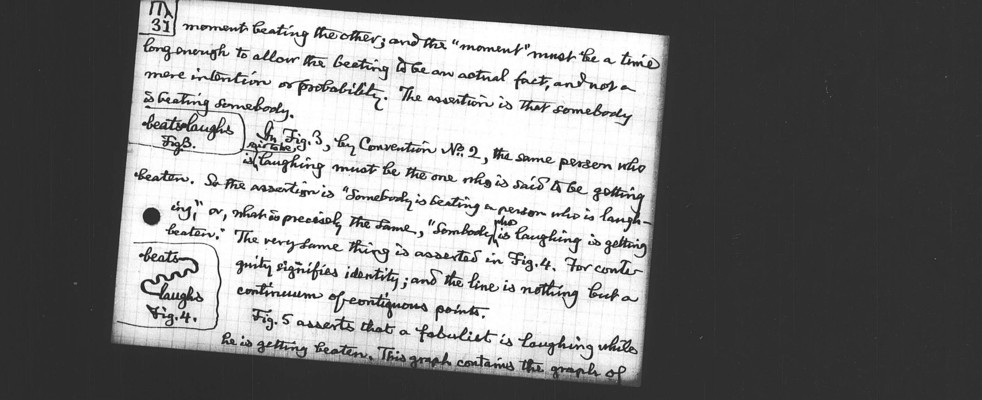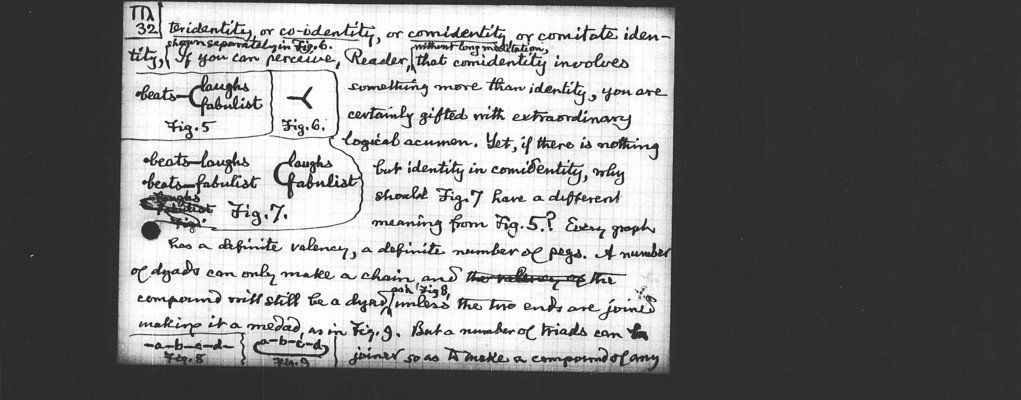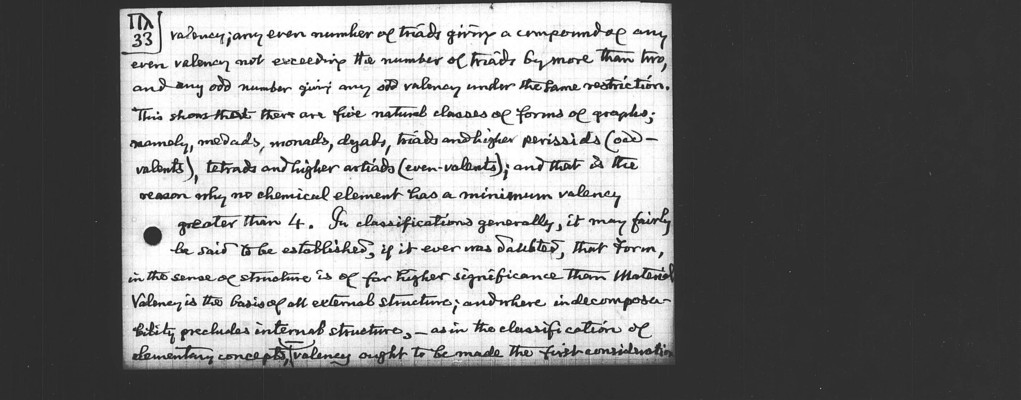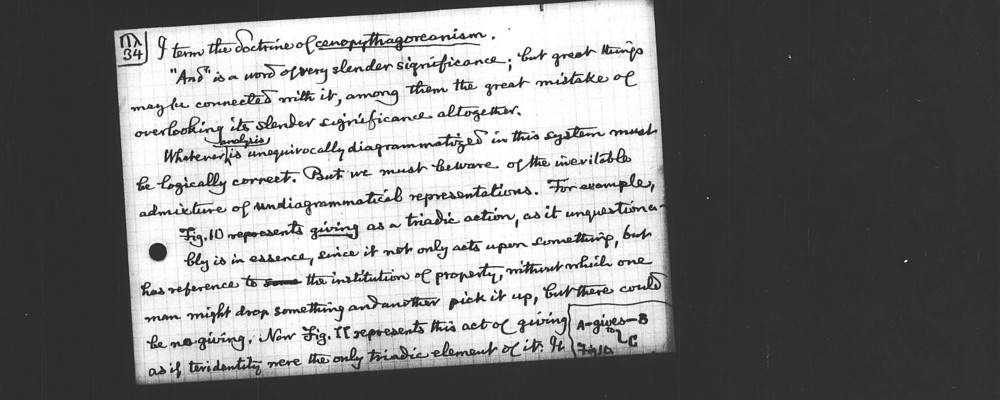Pages
31
πλ 31
moment beating the other; and the "moment" must be a time long enough to allow the beating to be an actual fact, and not a mere intention or probability. The assertion is that somebody is beating somebody.
(beats.laughs Fig. 3.)
In Fig. 3, by Convention No. 2, the same person who is said to be laughing must be the one who is said to be getting beaten. So the assertion is "Somebody is beating a person who is laughing," or what is precisely the same, "Somebody who is laughing is getting beaten." The very same thing is asserted in Fig. 4. For contiguity signifies identity; and the line is nothing but a continuum of contiguous points.
(beats~laughs Fig. 4.)
Fig. 5 asserts that a fabulist is laughing while he is getting beaten. This graph contain the graph of
32
\pi \lambda 32
teridentity, or co-identity, or comidentity, or comitate identity, shown seperately in Fig. 6. If you can perceive, Reader, without long meditation, that comidentity involves something more than identity, you are certainly gifted with extraordinary logical acumen. Yet, if there is nothing but identity in comidentity, why should Fig. 7 have a different meaning from Fig. 5? Every graph has a definity valency, a definite number of pegs. A number of dyads can only make a chain, and the compound will still be a dyad, as in Fig. 8., unless the two ends are joined making it a medad, as in Fig. 9. But a number of triads can joiner so as to make a compound of any
33
\pi \lambda 33
valency; any even number of triads giving a compound of any even valency not exceeding the number of triads by more than two, and any odd number giving away odd valency under the same restriction. This shows that there are five natural classes of forms of graphs; namely, medads, monads, dyads, triads and higher perissids (odd-valents), tetrads and higher artiads (even-valents), and that is the reason why no chemical element has a minimun valency greater than 4. In classifications generally, it may fairly be said to be established, if it ever was doubted, that form, in the sense of structure is [] for higher significance than material valency is the basis of all external structure; and where indecomposability precludes internal structure, as in the classification of elementary concepts, valency ought to be made the first consideration
34
\pi \lambda 34
I term the doctrine of cenopythagoreanism. "And" is a word of very slender significance; but great things may be connected with it, among them the great mistake of overlooking its slender significance altogether. Whatever analysis is unequivocally diagrammatized in this system must be logically correct. But we must beware of the inevitable admixture of undiagrammatical representations. For example, Fig. 10 represents giving as a triadic action, as it unquestionably is in essence, since it not only acts upon something, but has reference to the institution of property, without which one man might drop something and another pick it up, but there could be no giving. Now Fig 11 represents this act of giving as if teridentity were the only triadic element of it.
35
\pi \lambda 35
asserts that there is a transfer from A which is identical with a transfer of B, and is identical with a transfer to C. [By identity, I always mean individual, or as the logicians say, numerical identity, of which experiments alone can assure us. General sameness, or as the logicians say, indifference, according to which people say that the doctrines of Confucius, of Gotama, and of Jesus, exhibit the same moral quality, I express by the words sameness and of similarity, but not by identity. For this is something ascertained by direct inspection, not by experiments.] But this cannot be taken as proving the analysis, since there are evidently relations between the three concepts of transfer beyond what are diagrammatized.




